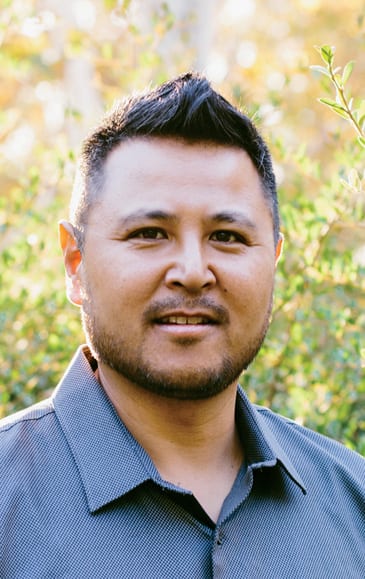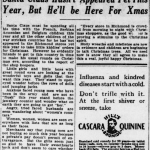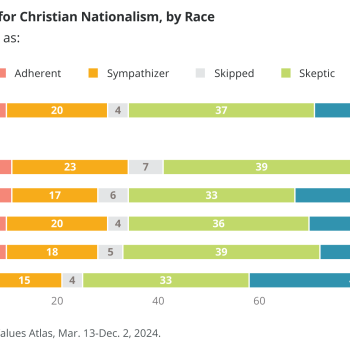“I am La Raza Cósmica,” said Robert Chao Romero. A professor at UCLA, Romero had taken a DNA test to determine his ancestry, and he was so stunned at the diversity of his bloodlines that he declared an identity in a cosmic race that drew from all the races of the earth.
His family, the Romeros, had always told him that they were “hacendados” and “Spanish.” That’s why, they explained, his abuelito was six foot five and had green eyes.
But his DNA test showed that he was Chinese (43.5 percent), Native American (18.9 percent), Manchurian and Mongolian (2.1 percent), broadly Southeast Asian (5.8 percent), Iberian (14 percent), broadly Southern European (6.1 percent), Senegambian and Guinean, and a large percentage designated as “unassigned.” In short, Romero wrote, “I am blessed to have the blood of most of the cultural family groups of the world—Asian, Native American, European, African, and Middle Eastern—coursing through my veins.”
The most shocking revelation was that Romero, even though he wrote a book in 2010 called The Chinese in Mexico, 1882-1940, had so much Asian ancestry. It turns out that Romero’s very own ancestors were part of the Manila Galleon trade of 1565-1815 brought peoples from China, the Philippines, Japan, and India to Mexico. It is estimated that 40,000 to 100,000 Asian immigrants came to Mexico in this period.
Romero was also shocked by how little Spanish ancestry he had. “Knowing this history, and how my genes corroborate this history, makes me feel betrayed. I feel like I have been lied to my whole life. I now know that my family’s obsession with whiteness reflects the values of the three-hundred-year-old colonial caste system that idolized ‘Spanish’ racial identity.” The Spanish had created a system of fourteen to twenty categories of racial mixture that rested shakily on phenotype and wealth. But it was nonetheless a system in which that many in Mexico aspired to rise.
In his terrific book Brown Church, Romero deconstructs this system by recovering the histories of religious resisters to colonialism. They include:
- Garcilaso de la Vega el Inca (1539-1616), a mestizo (which is the son of a Spanish father and Indian mother) who claimed the derisive term as a badge of honor. Like Las Casas before him, Garcilaso elevated indigenous culture. The Incas, he said, ruled justly over diverse populations, created enlightened legal systems, treated the poor benevolently, and created magnificent fortresses like Cusco. As a historian, Garcilaso told bracing stories of Spanish atrocities in his Royal Commentaries. He wrote that the imperialists “left their places and fell upon the Indians, laying hands on them to seize the many gold and silver jewels and precious stones with which the Indians had adorned their persons.” Nevertheless, according to Romero, he did not reject Christianity. Rather, “he saw through the colonial misrepresentations of Christianity and still encountered Christ.”
- Felipe Guaman Poma de Ayala (ca. 1535-ca. 1616), a descendant of Incan royalty who wrote The First New Chronicle of the Indians of Peru, Profitable to Faithful Christians (1615). In this 1,100-page blend of history, Catholic moral teaching, policy recommendations, and prophetic social justice reflections, Guman Poma contends that Spanish conquistadors were exploiting and ravishing the indigenous peoples of Peru. He argued that this was contrary to Christian faith. The indigenous peoples, he said, should be entitled to Christian self-government. Contrasting European debauchery with the righteousness of the indigenous peoples, he wrote, “It seems to me, Christian, that you are all condemning yourselves to hell. . . . But you have your own idols—your treasuries and your silver—all over the world.”
- Sor Juana Ines de la Cruz (1648-1695), the first mujerista theologian of the Brown Church and the “first feminist of the Americas.” Born in 1651 as the illegitimate daughter of a middle-class Criolla mother and a Spanish captain, she taught herself after being barred from the university in Mexico City. Writing as a nun, she elevated biblical characters such as Deborah, the Queen of Sheba, Esther, Rahab, and Abigail. In a context that, according to Romero, “reserved the powers of rational thought for men and limited women to a subservient status as “pure, modest, silent, and virtuous” wives and nuns, Sor Juana wrote theological treatises, poems, plays, and social-justice-themed worship hymns.
And these are just the earliest. Romero’s recitation continues with more familiar names, such as Antonio José Martínez, César Estrada Chávez, Oscar Romero. Even some evangélicos—like Samuel Escobar, Orlando Costas, and René Padilla—make appearances as matriarchs and patriarchs of the Brown Church.
A smart, popularly written book published by IVP Academic, Brown Church is intended for multiple audiences. First, Romero hopes to reach many church-attending Hispanics who reject the importance of comprehensive immigration reform and educational equity. “Those are political issues,” he is told, “that are separate from faith.” To this audience, and to increasing numbers of younger Hispanics who uncomfortably inhabit a “spiritual borderlands” because they believe in both faith and justice, Romero is saying that justice matters.
At the other end, Romero knows many scholars in Chicana/o studies who dismiss Christianity as perpetuating systemic racism and brutal colonization. He is told, “You can’t be a Christian and care about issues of racial and gender justice. Christianity is the white man’s religion, and it’s a stool of settler colonialism. It’s racist, classist, and sexist.” To this audience, Romero says that faith can be a resource for resistance. The Brown Church has throughout history challenged the Spanish Conquest, Manifest Destiny, Jim Crow segregation, Operation Wetback, U.S. imperialism in Central America, and the oppression of farmworkers.

As the “Make America Great Again” movement demonstrates, the need for resistance remains. Amid forecasts that the United States will become a majority-minority nation by 2045, the future of multiculturalism may be bright. At present, however, American Christianity is still constrained by white culture and organizing principles. Romero describes his own experiences of explicit racism and microaggressions from professors, church congregants, activists of the left and right, hateful internet trolls, realtors, and police. He’s been on the inside and outside of ethnic studies, Chicana/o studies, Asian American studies, American evangelicalism, and even his own Mexican and Chinese families. As he puts it, “I have lived my life in the in-between.”
“When economic times get tough,” concludes Romero, “we become the disposable ‘illegal alien,’ and are scapegoated and deported. We are wanted and unwanted. Necessary yet despised. We are Brown.” But the problem, he maintains, is precisely the solution. “When God chose to dwell among us, to take on human flesh, and to make our suffering his own, he chose to be Brown.”
This should not be a brave book for a tradition birthed by despised brown people on the edge of the Roman Empire. But in an age of Pax Americana led by a despot and propped up by white evangelicals, it is. I predict that it will be ignored by the very Christians who should read it.













